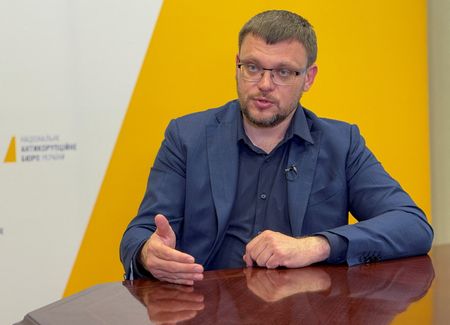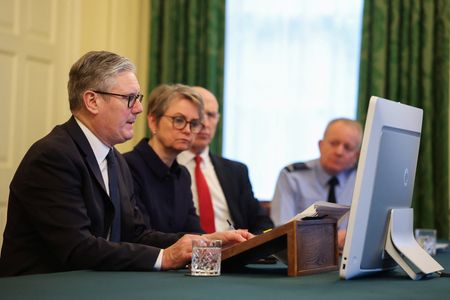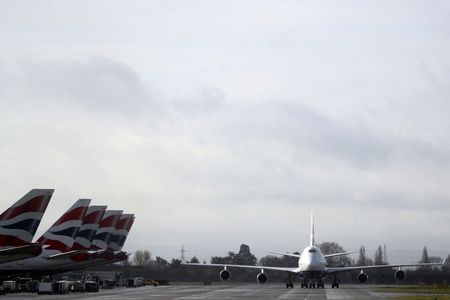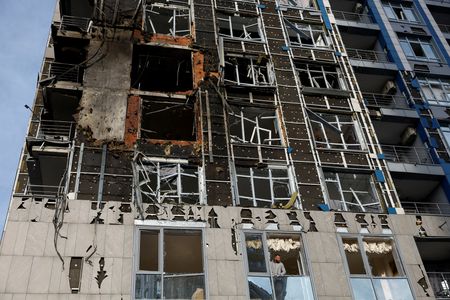By Dan Peleschuk
KYIV (Reuters) -Investigators in Ukraine could bring new charges in a sweeping probe into high-level graft that has fuelled the country’s worst wartime political crisis, the country’s top anti-corruption officer said on Tuesday.
The case involving an alleged $100 million kickback scheme at the state nuclear power agency has angered the public and sparked calls from both the opposition and President Volodymyr Zelenskiy’s own party for a tougher response.
New charges could further inflame tensions between Zelenskiy, whose former business partner is a chief suspect, and his domestic critics even as the president is under pressure from the Trump administration to secure a peace deal in the war with Russia.
Semen Kryvonos, head of the National Anti-Corruption Bureau of Ukraine (NABU), said investigators were still poring over thousands of hours of wiretaps and attempting to establish illicit financial flows.
“I am deeply convinced that we will have more suspects in this case, and that this case will expand,” he told a hearing of the parliamentary anti-corruption committee, which was broadcast online.
CASE SPARKED WIDESPREAD PUBLIC ANGER
The probe, unveiled by NABU earlier this month with recordings of suspects discussing shocking details, has claimed the jobs of two ministers and prompted Zelenskiy to overhaul management in the energy sector.
But he has faced pressure to take stronger measures such as firing his chief of staff Andriy Yermak, who is not a suspect in the case but is seen as the administration’s chief power broker.
Kryvonos, who did not specify what the next charges might be or when they would be brought, said investigators were moving forward despite what he described as public attempts to smear their work.
The probe into the alleged scheme to control contracts at Energoatom angered Ukrainians, who have endured widespread power outages as a result of Russian attacks on the country’s energy system.
Separately, Kryvonos said NABU investigators were also working on more than 10 cases involving the construction of defensive fortifications.
(Reporting by Dan PeleschukEditing by Frances Kerry)











